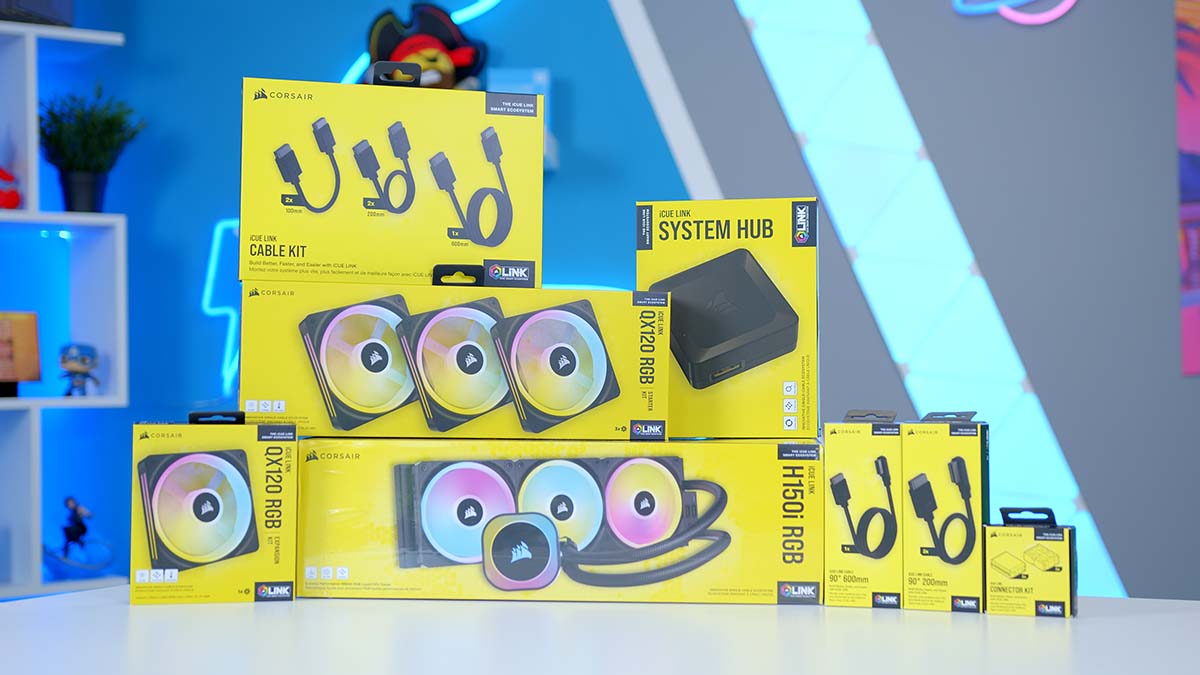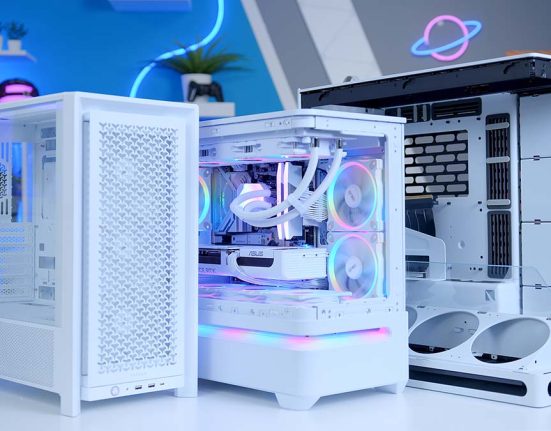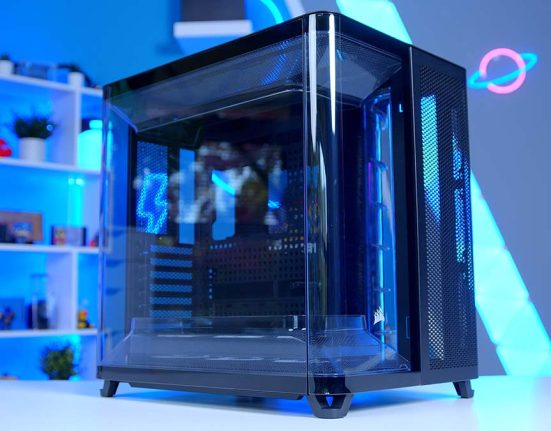Introduction
Corsair has been a mainstay in the PC hardware industry for as long as we can remember. Back in the early days of PC building, Corsair were known more for their DRAM modules which were geared towards enthusiasts that planned to overclock their systems. From there, we’ve seen a number of components enter the market, from different variations of DRAM modules for gaming and workstation systems, followed by power supplies, premium PC cases, all-in-one cooling solutions, and peripherals.
Over the years we’ve seen Corsair consistently flesh out their repertoire of premium products, with many of them reshaping the market when it comes to performance, airflow, thermal capability, and more. Needless to say, Corsair are one of the biggest players in this industry, and we’re always excited to see what new innovations or designs they have to offer.
In today’s article we’re looking at potentially one of the biggest and most exciting changes to the design and aesthetic side of the PC hardware space – RGB. Today, we’ll be reviewing Corsair’s brand new iCUE Link technology, which revitalises RGB hardware and software, potentially shifting the market towards a simpler but more effective way of lighting up your system.
Buy the Corsair iCUE Link Hub on:
Suggested Article: Best Corsair Prebuilt Gaming PCs to Buy in 2023
Traditional RGB & Cooling Configurations
Setting up and installing your fans, air cooler, or AIO, is one of the vital steps to getting your brand new PC up and running. If you’ve got a significant range of these components, it can somewhat overcomplicate the building process, and cable management due to the sheer number of cables and headers that you need to plug in. So how does it all work? Well, traditionally RGB fans and coolers will have two different types of headers (or power connectors) that you need to plug into your motherboard.

Prior to the creation of RGB hubs, consumers were forced to plug in fan headers and RGB headers individually, somewhere on their motherboard. Motherboards only have space for a certain amount of headers, so you can run out of space pretty quickly, forcing you to use adapters, or suffer with a mass of tangled cables all over your PC. Having two relatively long and frankly, not aesthetically pleasing cables for every fan and cooler is frustrating, and this can really add time onto the end of your build if you plan on keeping your cables nice and tidy.
RGB Hubs have made this somewhat easier over time. Instead of having to plug in all of your components into random headers strewn across your motherboard, all of your RGB connectors and fan connectors plug into one centralised hub, keeping the business in the back, and the aesthetic in the front. Whilst these hubs do make things simpler, especially when it comes to software control, I always find that these hubs are hard to place somewhere in the back of your case, or it makes cable management somewhat more complicated. Despite RGB hubs providing some simplicity, they can also overcomplicate things as well.
What is iCUE Link & Why Is It Important?
iCUE Link is Corsair‘s answer to the everlasting nightmare that is cable management, RGB, and fan configurations. iCUE Link utilises a similar philosophy to Lian Li‘s UNIFAN, and Thermaltake‘s SWAFAN designs, and dials them up to 11, providing an entirely new way of life for their entire range of components, including the brand new custom loop hardware, like pumps, GPU blocks, and more. All of this is powered by Corsair’s brand new iCUE hub. This new piece of hardware features two ports and controls all of the individual fan and RGB configuration through a singular cable.

The iCUE Link cables allow both power and data to flow to and from components to the iCUE Link hub using a daisy-chain method. Multiple components connect to each other, with room for seven components allowed on one daisy chain. Furthermore, all of the new components are now Smart, and feature individual microcontrollers that manage and reports to the hub and the iCUE software, allowing you to easily expand your network of Corsair hardware without hassle and the need for a mass of new cables that become complicated to manage.
The reason why this is so important, is because it revitalises and reshapes the entire way the PWM and addressable RGB system works. Gone are the days of multiple cables for one device, consumers can enjoy all of their RGB through a centralised control system that is easy to setup. Corsair’s iCUE Link streamlines cable management, provides more metrics and information, and overall, simplifies everything. Building a PC should be an enjoyable experience, not a task, and iCUE Link makes this much more inviting and accessible to consumers.



How Does it Work?
In this section we’ll briefly be delving into the performance of iCUE Link with some coverage of how exactly it works. We’ll be taking a look at the daisy-chaining system, but also what it looks like in the iCUE software too.
iCUE Link Features
Smart Ecosystem
Each individual component, whether it’s a fan, an all-in-one liquid cooler, or a pump, all of them feature their own microcontroller. This allows each component to manage data and report to the hub and iCUE software. This baseline architecture provides a mass of opportunities for newer features, and also offers simple upgradeability in the future.

Simple Daisy-Chain System
iCUE Link utilises a digital bus network architecture, which in layman’s terms means that a single cable is used both for data and power. These data and power cables connect to each component, daisy-chaining power, reporting back to the iCUE Hub. Consumers can have seven devices plugged into one port, allowing up to 14 in total, which is a lot of room!

Temperature Probes
At times, it can be difficult to read the temperature of your system, due to a lack system information. The new iCUE Link fans all offer temperature probes, allowing you to read thermals in terms of the airflow in and out of your PC. This just provides more useful information about your PC, allowing you to gauge whether you need more fans, or better cooling to ensure temperatures stay low.

Simplicity Is the Focus
The biggest benefit of the iCUE Link system is that it streamlines power, RGB, and cable management. Gone are the days of spaghetti cable management, consumers can enjoy a simple daisy-chain system, cutting down clutter, and turning cable management into an easy task, instead of a complicated job that we all hate to do.

Gallery





Conclusion
Corsair iCUE Link

Product Name: iCUE Link
Brand: Corsair
-
Features
-
Design
-
Versatility
-
Value For Money
Summary
Corsair’s brand new iCUE Link technology is a step in the right direction to streamline PC building, and make cable management a simpler process as opposed to a complicated task. All of the new iCUE Link products revitalise RGB as we know it, by having data and power go through one cable, that can be daisy-chained to other components. The simple, but also genius method is a new solution to make building your own PC a fun hobby, instead of a chore that takes to much time and involves having to clean up clutter. Corsair have absolutely smashed it out of the park here, and I imagine there are many consumers that will pick up these new products to make their building experience easier.
However, my biggest concern is the price. The hardware and software of this system is sound, this needs to be said, but these new components are not sound. Consumers can expect to pay a minimum of $200 for a 240mm AIO, with the price increasing exponentially on bigger coolers, more fans, cables, and connectors. Whilst I do think that iCUE Link is worth a consideration, I’d recommend looking at your budget first and seeing whether this new system is worth it, because once you’re in, you’re basically stuck with Corsair, unless you want to deal with the hassle of PWM and RGB headers again.
Pros
✅ Streamlines cable management.
✅ Simple and effective.
✅ Supports a massive number of devices.
Cons
❌ Rather expensive.
❌ Not compatible with old-gen iCUE products.
❌ Requires some configuration within the iCUE software.



![FI_[DM78] Corsair Air 5400 + 5090 Gaming PC Build](https://geekawhat.com/wp-content/uploads/2025/11/FI_DM78-Corsair-Air-5400-5090-Gaming-PC-Build-551x431.jpg)
![FI_[DP051] Antec C5 + 5070Ti Gaming PC Build](https://geekawhat.com/wp-content/uploads/2025/11/FI_DP051-Antec-C5-5070Ti-Gaming-PC-Build-551x431.jpg)


![FI_[DM76] HAVN BF360 5090 Build](https://geekawhat.com/wp-content/uploads/2025/10/FI_DM76-HAVN-BF360-5090-Build-1-551x431.jpg)
